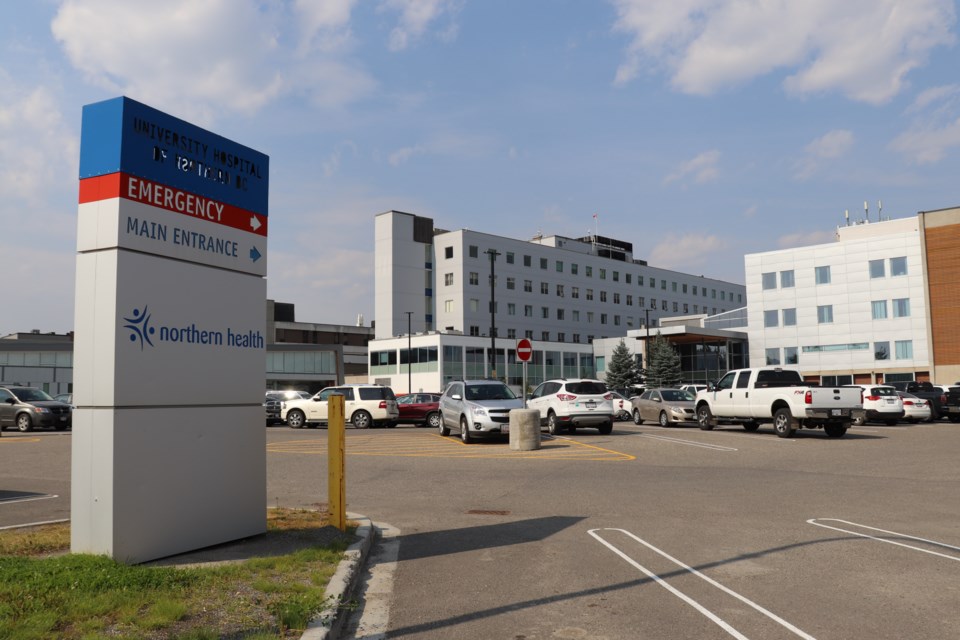While hospitalizations from COVID-19 are rising in the north and other parts of B.C., Northern Health says it's focused and ensures its system can provide care to each patients involved with the virus or not.
However, the authority says some needs may require other options.
Our sister Glacier Media site Times Colonist reported today (Dec. 2) that two patients from Northern Health have been moved to Royal Jubilee Hospital in Victoria for COVID-19 care, both in need of critical care.
Northern Health has since issued a statement, confirming patients have been moved as of now, but explains it's not out of the ordinary as numbers fluidly change on a daily basis.
"We can confirm patients have been transferred from Northern Health to other health regions of BC authorities for care during the pandemic," authority spokesperson Eryn Collins says.
"Provincial transfer protocols are in place to support patients, and those protocols include strict COVID-19 health and safety measures.
"The provincial and regional plans are in place to deliver care as we see increases in numbers of people in hospital for COVID-19, and to inform how we move people around the region and province - if that’s required."
Patients that do end up being moved are based on care needs. They can also be transported should hospitals be understaffed, even if beds are available.
"We can’t predict precisely what referral or transfer patterns may look like - especially for individual patients or locations; those decisions would be based on the care needs of a patient, and available hospital (inpatient and staffing) capacity in any given area at the time," the statement added.
Across the north, there are 41 critical care base beds with another 23 surge beds, which can be scaled up or down depending on needs, and roughly 199 ventilators available to support critical care cases.
Transport ventilators are also available and these numbers can change as additional ventilators arrive and subsequently installed.
Collins also says each hospital in Northern Health has a pandemic plan, which includes identifying where patients would be cared for based on their care needs.
She adds it's important for the public to know that not all cases in ICU units are COVID-19 related.
Dr. David Forrest, an infectious disease and critical-care physician at Nanaimo Regional General Hospital, told Times Colonist it’s not only the right thing to do, but a provincial obligation to transfer patients who need critical care if there are inadequate resources in one area.
“And I think that Northern Health would be in the same position of assisting us if we were overwhelmed.”
A Nanaimo physician who divides his time between Nanaimo and Terrace is admitting COVID-19 patients on a daily basis to the small rural hospital in Terrace, “and they are swamped,” said Forrest. Even the large hospital in Prince George is busy, he said.
It’s not ideal to move patients hundreds of kilometers between health authorities, and “taking them away from their families and so on is awful, but the reality is that they need for their care and I think it’s absolutely the right thing to do,” said Forrest.
The breakdown of critical care beds in Northern Health's three COVID-19 designated hospitals are as follows:
Fort St. John
- Four base beds (five ventilators and four transport ventilators)
Mills Memorial Hospital, Terrace
- Five base beds and four surge beds (five ventilators and two transport ventilators)
University Hospital of Northern British Columbia (UHNBC), Prince George
- 23 base beds and 16 surge beds (20 ventilators and four transport ventilators)
Other Northern Health acute care facilities
- Nine base beds, three surge beds (three ventilators and 10 transport ventilators)
"These hospitals, along with 16 others around the province, have been designated to deliver care to the most critically ill patients and to maximize capacity," Collin explained.
As of publication (Dec. 2), there are 33 people hospitalized in the authority with 12 of those in ICU.
Province-wide, there are 337 people in hospital and 79 of those under critical care.
B.C.'s Ministry of Health says the following hospitalization data as of Nov. 30 was entered as follows:
Numbers change on a constant basis but this is the latest government data.
- Fort St. John Hospital
- Four base beds
- One occupied
- Three unoccupied
- Four base beds
- Mills Memorial Hospital (Terrace)
- Five base beds
- Three occupied
- Two unoccupied
- Four surge beds
- All unoccupied
- Five base beds
- University Hospital of Northern British Columbia (Prince George)
- 23 base beds
- 15 occupied
- Eight unoccupied
- 16 surge beds
- All unoccupied
- 23 base beds
- Rest of Northern Health
- Nine base beds
- Five occupied
- Four unoccupied
- Three surge beds
- All unoccupied
- Nine base beds
- Regional total
- 41 base beds
- 24 occupied
- 17 unoccupied
- 23 surge beds
- All unoccupied
- 41 base beds
Dr. Henry announced another 834 cases this afternoon with 12 additional deaths, which brings the provincial fatality rate to 469.
One of the deaths announced today belongs to Northern Health, bringing the region's toll to eight.
- with files from Cindy E. Harnett, Times Colonist



